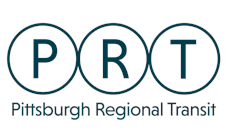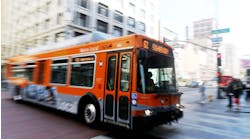Calgary, Alberta
Tanya Brusse
Fixed Route Product Manager
TripSpark Technologies Inc.
Distracted driving is recognized as a leading cause of preventable traffic collisions. Research by the National Highway Traffic and Safety Administration has shown that even short glances away from the road – as little as two seconds – significantly increased the risk of a motor vehicle accident.
Though the majority of driver distraction research has studied the public, transit drivers are susceptible to distraction too.
The city of Ottawa, Ontario, experienced the dangers of transit driver distraction firsthand on September 18, 2013, when a double-decker bus operated by Ottawa’s OC Transpo collided with a VIA rail train. Six people were killed and several were seriously injured. An investigation determined that driver distraction was a significant factor in the crash. At the time of the crash, the driver had been viewing a video monitor that was located on a panel above the windshield. This caused the driver to look upward and away from the road.
The OC Transpo crash showed how in-vehicle technology can be a dangerous distraction. However, when guidelines are followed, technology can be used safely and can even serve to improve safety.
In my role as a Product Manager for the fixed route market, I engage with transit operators to determine technology solutions that optimize operations. A key component of transit technology is the mobile data terminal (MDT), a powerful piece of in-vehicle hardware that integrates with back-office software to improve on-time performance, two-way communication, data collection and reporting.
In addition to helping agencies address their operational needs, a key benefit of the devices is that they reduce liability by limiting driver distraction. MDTs serve to reduce distraction through adjustable screen options, safe text messaging and automated announcements.
Without an MDT, drivers must switch between using multiple devices and logbooks to complete tasks related to communication, data recording and adapting to route changes. MDTs consolidate the user interfaces of numerous devices into a single display. When in motion, the display can be locked to display a clock, map or blank screen, further reducing the opportunity for distraction. MDT Screens are designed to be easily readable with large, identifiable buttons, adjustable brightness and position settings, and a ‘night mode’ which inverts the colours on the display to reduce distraction in low-light conditions.
Non-emergency radio calls, a recognized source of driver distraction, are eliminated when drivers use their MDTs text messaging function to communicate with dispatch. As an added safety measure, drivers can send and view messages only while the vehicle is stationary.
MDTs can integrate with CAD/AVL software, signs and audio systems, to share real-time route information with passengers via automated announcements – without the driver having to take any action.
Conversations with passengers can also be a cause of driver distraction. MDTs can help reduce this source of distraction, because passengers ask drivers fewer questions when information is shared through the on-board audio and visual announcements.
When considering MDTs for your fleet, be sure to ask for a demonstration of the devices’ distraction-reducing features to gain a better understanding of how they can make your operation safer. If your agency already has MDTs, I urge you to ensure all the features I’ve mentioned are enabled and used by your drivers.
Kenneth F. Reed, AIC, ARM-P
Wadsworth, Ohio
Loss Control Services Manager,
Ohio Transit Risk Pool
In response to the rise in incidents of aggressive behavior on the systems Ohio Transit Risk Pool Members operate, we have endeavored to create and provide training tools they can use to equip operators to respond appropriately in these situations. Specifically, we have developed two training modules. The first module is titled “Aggression Management” and it was developed several years ago. This in-person training session is designed to give the attendees hands-on tools to be able to measure aggression as it escalates, first and foremost in themselves and in those they encounter. This ability to gauge the level of aggression in each situation then provides confidence to respond appropriately before the situation reaches a point of violence. The most important aspect of this training is that it gives the individual an ability to recognize their own aggression level and control it. Controlling our own aggression when confronted with someone displaying aggressive behavior goes a long way to determining if the outcome will be positive or negative. The second module was developed more recently to be an addition to our Operator Training Program. The training was developed in conjunction with TAPTCO and incorporates some of the concepts in the first, but focuses more on tools to deescalate confrontational situations. The training utilizes techniques taught and employed by law enforcement to interact with agitated individuals in stressful situations. These techniques have proven themselves to be very effective when properly employed.
OTRP directs our Members to take an organizational wide approach to responding to incidents occurring on their systems. This requires that dispatchers and supervisors be trained in these areas as well and are responsive to situations so operators do not feel they are on their own. We also encourage our Members to partner with local law enforcement and even offer them training opportunities where possible, so they understand the system and are better able to respond when needed. The bottom line is we are trying to equip operators to recognize when a situation is escalating and to respond in an appropriate and timely fashion to prevent the situation from turning violent.
The Ohio Transit Risk Pool is a risk sharing/self-insurance pool established in 1994. Its membership is made up of ten public transit agencies in the State of Ohio, including Lima/ Allen County RTA, Akron Metro RTA, Butler County RTA, Delaware County Transit Board, Laketran, Portage Area RTA, Stark Area RTA, South East Area Transit, Toledo Area RTA and Western Reserve Transit Authority. Collectively our Members operate approximately 25 million miles annually utilizing about 1200 vehicles and employing roughly 1500 people.
Bill Miller
Pittsburgh, Penn.
Chief Operations Officer
Port Authority of Allegheny County
At Port Authority of Allegheny County, our bus and light rail operators are tasked with providing more than 200,000 rides a day while maneuvering through traffic and construction; collecting fares; providing assistance and directions; and — most importantly — assuring the safety of each of our riders.
We know, however, that operators can’t worry about rider safety if they themselves don’t feel safe.
That’s why Port Authority goes to great lengths to make sure our operators are safe while performing their jobs.
For us, safety begins before an operator even steps on a bus with classroom training on how to engage with riders.
In this setting, operators are trained to make one and only one attempt to collect a passenger’s fare. If a passenger refuses to pay, operators are instructed to allow the passenger on board, call dispatch, and one of our 50 uniformed Port Authority police officers will meet them at the nearest stop to remove the passenger. This allows operators to avoid confrontation and permits our police officers to uphold the rules.
But it’s not always the passengers who refuse to pay their fares who cause trouble. For riders who engage in inappropriate conduct on board the bus, Port Authority police officers frequently perform ride-alongs while in uniform.
This dissuades most riders who would otherwise be disruptive. It also provides passengers who are just going to or from work, a doctor’s appointment or school with a sense of safety.
Recently, Port Authority instituted Crisis Intervention Training (CIT) to help operators better identify confrontations before they start or to extinguish them quickly. This training teaches operators how to respond in potentially challenging situations and defuse such encounters
Another way in which Port Authority protects operators is a new protective shield that has been installed on our newer buses and is available as a retrofit on older models. The clear Plexiglas can be used (it’s optional) to provide operators with a safety barrier against riders who want to cause them harm.
Finally, Port Authority buses are each equipped with several surveillance cameras that can be used to investigate incidents. This last line of defense can both dissuade riders from inappropriate or illegal conduct and help police catch perpetrators if such behavior occurs.
Dale Knutson, TSSP
Birmingham, Ala.
Manager of Safety, Training and Security
Birmingham Jefferson County Transit Authority (MAX)
Our operator physical assaults have been at a minimum (fortunately!), BJCTA has an off-duty police force that, during morning and evening rush hours, ride two routes each weekday. Their presence deters many people from doing anything physically to an operator. If a customer does try to get physical with an operator, either on the bus or at our Central Station, where all of the buses meet downtown, we have a Trespassing policy that is used to ban the customer from either the Central Station area, the route, or the system, depending on the severity of their actions. We work with our off-duty officers who arrest the person, and escort them off the property. Again, uniformed police presence has deterred some of the potential assaults.
Verbal assaults, however are a different thing, and we spend some time in the classroom doing roleplaying how to react to those types of situations. We want to try to stop any physical assaults by teaching the operators the proper way to react to any verbal assaults. We spend class time playing the video tape of an actual verbal assault, and, at various parts, stop the tape and ask the new students, “What would (or should) you say?” Our instructors then continue the tape and show the students what the “seasoned” operator did say, and then discuss whether or not it was a proper response.
Our philosophy here at BJCTA is that the customer never starts an argument with an operator. It is the Operator’s response to what the customer says that can, and often will start a confrontation, which could lead to further issues, including physical assault. It’s not that we think that the operator is “at fault” during every verbal confrontation — quite the opposite. We do believe, however, that how the operator reacts to what is said will make the difference between a good interaction and a potentially dangerous one.
Example: When a passenger gets on the bus with a Styrofoam cup of hot coffee, and the operator needs to tell the passenger that the coffee is not allowed on the bus, we teach the operator to start the sentence with “the issue” (the cup of coffee) — not “the person” (You). In other words, “That coffee is not allowed on the bus” is a lot better than “You can’t bring that on the bus.”
Starting the sentence with “you” allows the customer to be able to take this to a personal level, which can escalate from a verbal assault (“You can’t tell me what to do!”) to a potential physical assault with the passenger throwing the cup-full of scalding coffee at the operator. Instead, starting the sentence with the issue (the cup), allows the passenger to save face – to NOT take it personally, thereby eliciting quite a different response.
This takes time to learn, but once it is learned by our operators, they attest to the fact that it helps a great deal when it comes to deterring negative and potentially dangerous situations.





